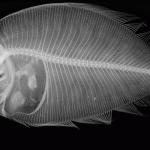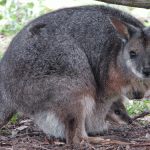
The North African ostrich is the fastest running bird with a speed of 18 metres per second. Image: Jo Crebbin/Shutterstock
If animals were allowed to compete in the Olympics, we wouldn’t really stand much of a chance.
Ursain Bolt is currently ranked as the fastest man in the world after being clocked at 9.58 metres per second. This translates to an impressive speed of 37.6 kilometres an hour, but he would certainly come in behind a cheetah; the feline is almost three times faster at 29 metres per second (104 kilometres an hour). At 70 kilometres per hour, a racehorse would come in second and the greyhound would be close behind at 69 kilometres an hour. About the only animal Bolt would stand much of a chance against would be the camel, which can run at 35.3 kilometres per hour.
Olympic sports are performed by the best of the best of our species. But if these athletes were to be matched against animals, they would be outclassed in most sports, according to a review in Veterinary Record.
” “˜Citius, Altius, Fortius’ is the Olympic motto, but if we allowed the rest of the animal kingdom into the Games, and it were to select the peregrine falcon, Ruppell’s vulture and the 190-tonne blue whale as its representatives for “˜Faster, Higher, Stronger’, we could not offer much competition,” writes author Craig Sharp, from the Centre for Sports Medicine and Human Performance at Brunel University, UK. “Even if restricted to terrestrial animals, we could be up against the cheetah, the red kangaroo and the 12-tonne bull African elephant.”
Sharp was not surprised by the animal speeds, as he had reared orphan cheetah in Kenya and has worked with horses and greyhounds as a vet. Instead, he says he was more surprised at the results from the non-terrestrial animals. The peregrine falcon has been clocked at 259kilometres per hour, with a diving speed of 259 kilometres per hour, while the Ruppels vulture can fly to an altitude of approximately 11,3000 metres and the sooty tern can stay continuously airborne for five years.
“Those really surprised me, as did the sailfish at over 100 kilometres per hour, and elephant seal diving for over two hours to 1275 metres, the emperor penguin diving to 534 metres for 16 minutes, [and] the sperm whale diving to 3,000 metres.”
Speed isn’t the only arena where animals have the advantage. The red kangaroo would claim the gold medal in the long jump, leaping 12.8 m compared to Mike Powell’s 8.95 m. It would also beat Javier Sotomayor’s in the high jump, clearing 3.1 metres as opposed to his record of 2.45 metres. Sotomayor would also be beaten by the springbok, which can jump over three metres, and by the snakehead fish, which is said to be able to leap four metres out of the water.
In weightlifting, human athletes are hopelessly outclassed by the powerful elephants, gorillas and grizzly bears, who are reputed to be able to lift 300, 900 and 455 kilograms respectively. And while our fastest runners could beat a camel in a race, we’d lose all lose to them in a drinking competition — a thirsty camel can drink 80 litres of liquid in 10 minutes.
However, Sharp says we shouldn’t be too despondent at these results — as a species, we have remarkable versatility and make great jack-of-all-sports. “If you look at the sheer range of the physical sports in the Olympics — sprinting, marathon, jumping (high and long), throwing, weight-lifting, swimming and we can deep dive (unaided) to well over 200 m — no other single animal species comes near us.”
Dr Rebecca Sealey from the Institute of Sports and Exercise Science at James Cook University, Queensland, concurs with this. “While the article indicates that certain animals perform better than humans at specific athletic tasks, the beauty of the human is the ability to adapt physiologically to training and to be able to perform at a high level across multiple physical demands, allowing of a diversity of abilities, whether it be speed, endurance, precision, cognition, dexterity, strength or flexibility.”






